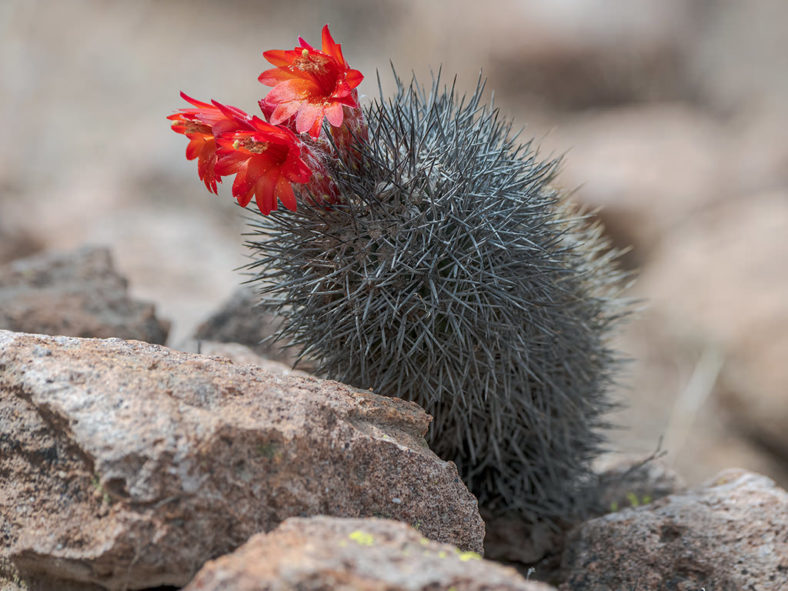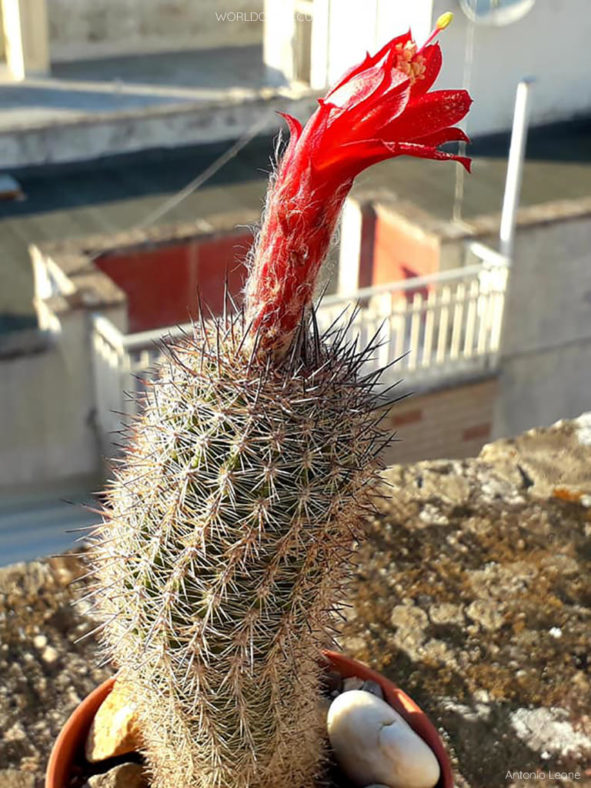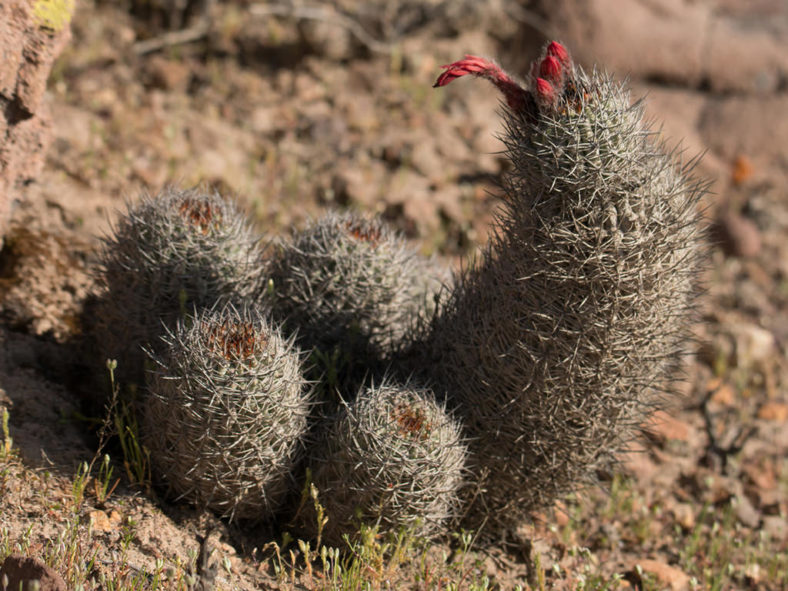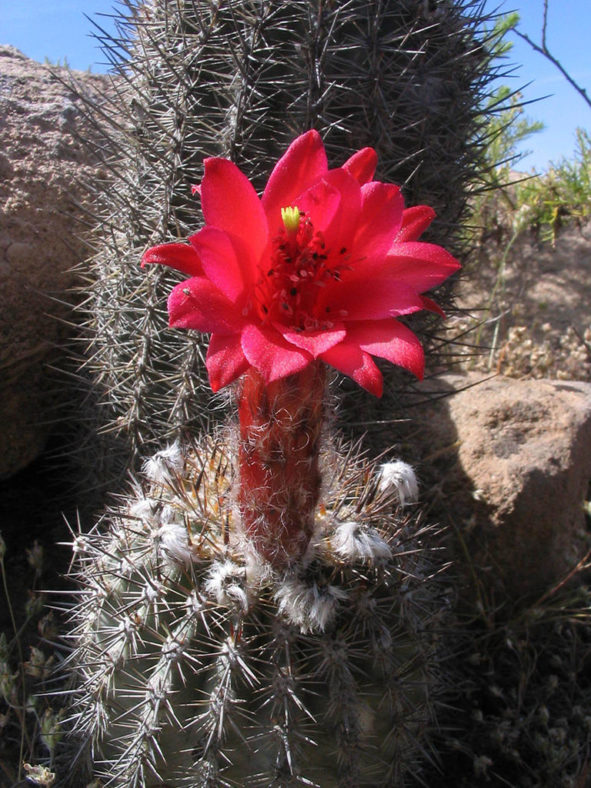Scientific Name
Oreocereus hempelianus (Gürke) D.R.Hunt
Synonym(s)
Arequipa hempeliana, Arequipiopsis hempeliana, Borzicactus hempelianus, Echinopsis hempeliana
Scientific Classification
Family: Cactaceae
Subfamily: Cactoideae
Tribe: Trichocereeae
Genus: Oreocereus
Etymology
The specific epithet "hempelianus (pronounced hem-pel-ee-AH-nus) honors George Hempel (1847-1904), a German businessman, politician, and cactus collector.
Origin
Oreocereus hempelianus is native to the mountains of southern Peru and northern Chile. It grows in rocky and sandy soils at elevations between 7,880 and 12,800 feet (2,400 and 3,900 m).
Description
Oreocereus hempelianus, also known as Arequipa hempeliana, is an attractive cactus with short, cylindrical stems with 10 to 20 ribs and a quite variable spination. It can grow solitary or form a small clump over time. The stems are greyish-green, erect or decumbent, and can reach up to 16 inches (40 cm) long and 6 inches (15 cm) in diameter. The spines are initially yellow to reddish and become dull grey with age. Each areole bears 1 to 10 flexible, often curved central spines measuring up to 2 inches (5 cm) long and 8 to 30 needle-like to bristle-like radial spines measuring up to 1.2 inches (3 cm) long.
The flowers are scarlet to purplish-red and appear at the apex of the stems in spring. They are tubular, slightly curved, and can reach up to 3 inches (7.5 cm) in length and 1.4 inches (3.5 cm) in diameter. The fruits are egg-shaped to barrel-shaped, yellowish, and contain tiny black seeds. They can grow up to 1 inch (2.5 cm) in diameter.

How to Grow and Care for Oreocereus hempelianus
Light: This cactus likes full sun. It can handle partial shade but thrives in direct sunlight during the summer. A sunny window is a good spot to grow O. hempelianus indoors. To encourage balanced growth, rotate the pot a quarter turn every week or two. If possible, grow your cactus outdoors from spring to fall.
Soil: O. hempelianus does not like "wet feet" and needs to be grown in well-draining soil. You can use commercial soil mixes for cacti or make your own.
Hardiness: During the active growth period, this cactus likes warm temperatures, while in winter, it likes cooler temperatures. O. hempelianus can withstand temperatures as low as 20 °F (-6.7 °C). USDA Plant Hardiness Zones 9a to 11b, 20 to 50 °F (-6.7 to 10 °C).
Watering: Water thoroughly from spring to fall, but allow the soil to dry out before watering again. With the arrival of fall, gradually reduce the watering frequency. When O. hempelianus is dormant in winter, give it just enough water to prevent shrinking.
Fertilizing: During its growing season, this cactus likes regular fertilizing. A balanced, water-soluble fertilizer, diluted to 1/4 strength, can be added to each watering. A 10-10-10 fertilizer is ideal. Instead of making a solution of water and fertilizer, there are also dry fertilizers. Do not fertilize during the winter.
Repotting: While O. hempelianus is young, it is recommended to repot each year in early spring. Once it matures, repot when your cactus is outgrowing its pot.
Propagation: Using stem cuttings is the easiest method to propagate O. hempelianus because seed propagation is a slow process. Take cuttings during the growing season. Spring and summer are the best time to sow the seeds.
Learn more at How to Grow and Care for Cereus.
Toxicity of Oreocereus hempelianus
O. hempelianus is non-toxic to humans or animals.
Links
- Back to genus Oreocereus
- Succupedia: Browse succulents by Scientific Name, Common Name, Genus, Family, USDA Hardiness Zone, Origin, or cacti by Genus
Photo Gallery


